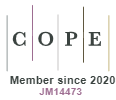Organizational Structure and the Internationalization of Companies: A Case Study in Brazil’s Sugar and Alcohol Sector
DOI:
https://doi.org/10.5585/ijsm.v10i3.1780Keywords:
Internationalization, Organization Chart, Sugar and Alcohol Sector.Abstract
In today's scenario of accelerated globalization, an outstanding case is that of Brazil's sugar and alcohol sector which, quite deregulated, has received considerable foreign investment motivated by the large global demand for ethanol as a source of fuel and by the competitive quality of the domestic product. It is important to underline that even when this sector shows good prospects, these enterprises should have a consistent strategy to enter the world markets with a solid internationalization plan. By using the Case Study Methodology at Brenco, the Brazilian Renewable Energy Company, this paper sought to outline the organization chart of this entity, regarded as an international project, with the aim of identifying the existence of an advanced innovative business model within this sector, characterized by large groups of local enterprises, directed toward the domestic market. Among the main results obtained it is notable that the organization chart is in line with the goal of being a global enterprise and with the target of becoming, by 2015, one of the sector's five largest enterprises.
Downloads
Downloads
Published
How to Cite
Issue
Section
License
Copyright (c) 2011 Iberoamerican Journal of Strategic Management

This work is licensed under a Creative Commons Attribution-NonCommercial-ShareAlike 4.0 International License.
- Abstract 199
- PDF (Português (Brasil)) 145






